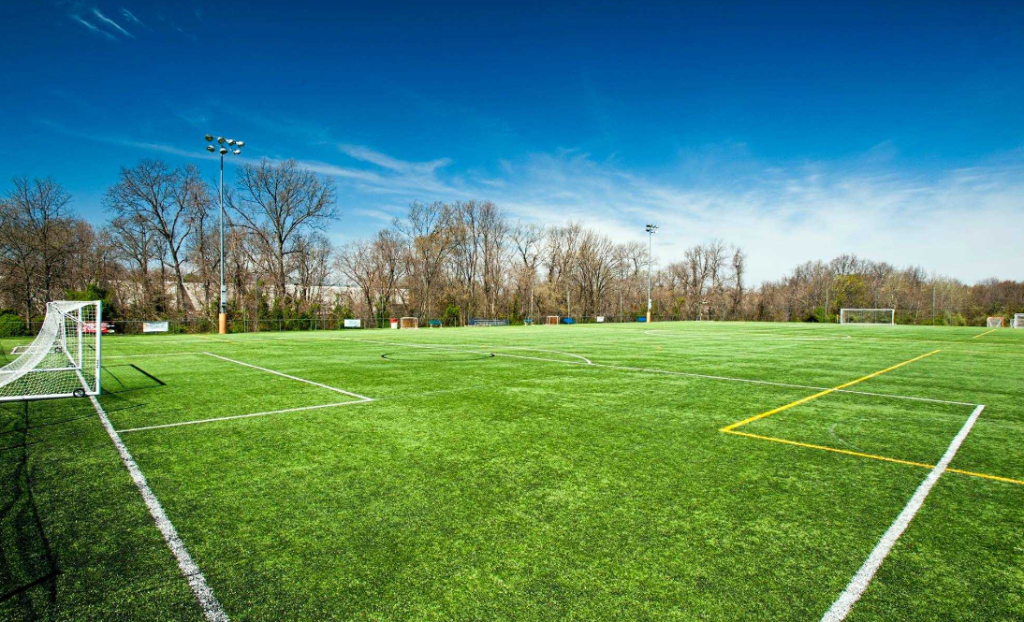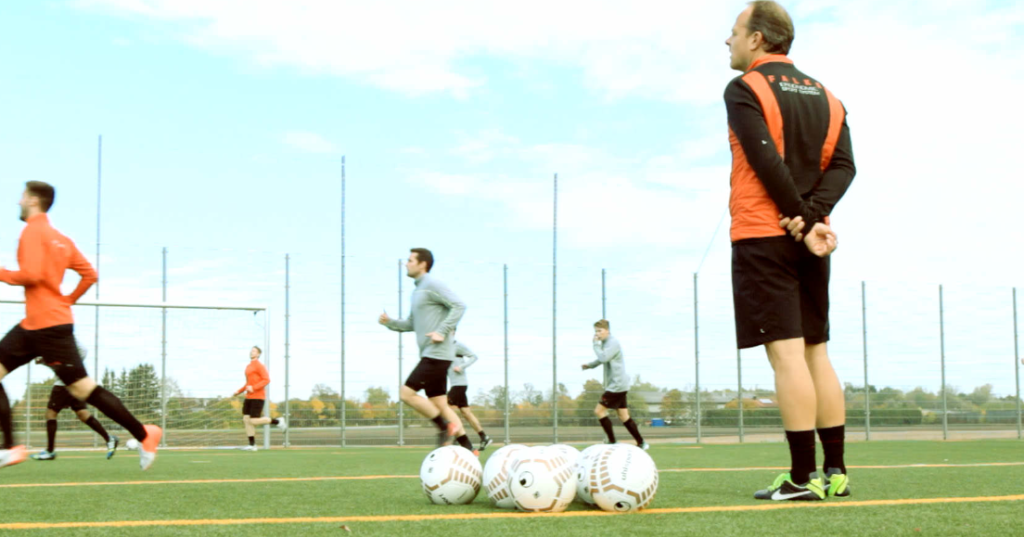Soccer field lines include touch lines (sidelines) and goal lines (end lines). Soccer field lines are crucial markings that define the boundaries of a soccer pitch.
The touch lines run along the length of the field, while the goal lines mark the ends. These lines play a vital role in regulating gameplay, such as during kickoffs and determining out-of-bounds plays. Understanding the significance of these lines is essential for players, coaches, and referees to ensure fair and organized matches.
Let’s delve deeper into the importance and functions of these fundamental markings on a soccer field.
Standard Soccer Field Lines
Boundary Lines

The lines on the sides of the field are known as touchlines, while the lines at the ends of the field are referred to as goal lines.
Table of Contents
Center Circle
The line that divides the field into two halves is the center circle, which plays a crucial role in kickoffs and player positioning during the game.
Penalty Area Soccer Field Dimensions
The penalty area in soccer is a vital part of the field, measuring 44 yards wide and 18 yards deep. It is marked by two lines that extend across the width of the field, providing a designated area for crucial game actions.
Penalty Box
The penalty box, also known as the 18-yard box, is a rectangular area located at each end of the soccer field. It extends 18 yards from the goal line into the field and 44 yards in width. It is a crucial area where fouls committed by the defending team result in a penalty kick for the attacking team.
Soccer Field Lines
The penalty spot is a crucial element within the penalty area. It is located 12 yards from the goal line and serves as the point from which penalty kicks are taken. This spot is of utmost significance during penalty shootouts and is often the center of attention during crucial matches.
Goal Area Soccer Field Lines Explained
Soccer field lines are an essential aspect of the game, providing a clear boundary for players and officials. The touchlines or sidelines run along the length of the field, while the goal lines or end lines mark the ends of the field.
Other important lines include the halfway line, penalty area, and penalty box.
Goal Area Soccer Field Lines Explained Soccer field lines are essential in marking the dimensions of the field and creating boundaries for the players. One of the most crucial lines on a soccer field is the goal area, which consists of the goal box and goal line. In this section, we will discuss the goal area soccer field lines and their significance in the game. H3: Goal Box The goal box, also known as the penalty area, is a rectangular box located in front of the goal post. This box is 44 yards wide and 18 yards long and is marked by two lines, the goal line, and the penalty area line.
Corner Arc
The corner arc is an essential marking on a soccer field that serves specific purposes. Understanding the significance, placement, and dimensions of the corner arc is crucial for players and officials during a game.

Purpose of Corner Arc
- Indicates where corner kicks are taken
- Provides a clear boundary for defending teams
- Ensures fair play and accurate positioning during set-piece plays
Placement and Dimensions
The corner arc is positioned at each corner of the field and has a set radius of 1 yard (0.91 meters). This curved line helps players position the ball correctly for corner kicks, allowing for strategic plays and goal-scoring opportunities.
Halfway Line Soccer Field Lines Diagram
Soccer field lines play a crucial role in organizing the game and providing a visual guide for players and officials. Among these lines, the halfway line holds particular significance, acting as a pivotal marker that divides the field into two halves. Let’s delve into the specifics of the halfway line and its role in the soccer field lines diagram.
Midfield Line
The midfield line, also known as the halfway line, is a key feature of the soccer field lines diagram. Positioned equidistant from both goal lines, this line divides the field into two halves. It serves as a reference point for various aspects of the game, including kickoffs, player positioning, and gameplay strategies.
Importance of the Midfield Line
The midfield line is essential for maintaining balance and fairness in soccer matches. During kickoffs, all players must be positioned on their respective halves, emphasizing the significance of this central line. Additionally, the midfield line influences team tactics, as it delineates defensive and offensive territories, guiding players’ movements and positioning on the field.
Midfield Line in Practice
When teams prepare for a match, coaches often emphasize the strategic implications of the midfield line. Understanding its role allows players to optimize their positioning and movement, ensuring effective gameplay and coordinated team efforts. Moreover, referees rely on the midfield line to enforce rules and monitor player positions during crucial game moments.
Technical Areas
When it comes to soccer field lines, the technical areas play a crucial role in the organization and management of the game. These areas, including the coach’s box and player’s bench, are designated zones that serve specific purposes in the context of soccer matches.
Coach’s Box
The coach’s box is a designated area on the sidelines where the team’s coaching staff, including the head coach and assistants, are positioned during the game. It is a restricted zone where the coaches can give instructions and guidance to the players. This area also serves as a space for the coaching staff to communicate with the match officials. The dimensions of the coach’s box are defined by the soccer governing bodies and must be adhered to for proper management of the game.

Player’s Bench
The player’s bench is another crucial technical area on the soccer field. It is where the substitutes, team officials, and players not actively participating in the game are seated during the match. The player’s bench provides a designated space for the team members to rest, receive instructions from the coaching staff, and prepare for potential entry into the game as substitutes. The location and layout of the player’s bench are important for maintaining order and facilitating seamless player substitutions during the match.
Conclusion
Understanding the different lines and dimensions on a soccer field is crucial for players, coaches, and referees. By knowing the purpose of each line, the field can be utilized effectively, ensuring fair play and strategic gameplay. With the right knowledge, soccer enthusiasts can appreciate the intricacies of the game and maximize their enjoyment of the sport.

